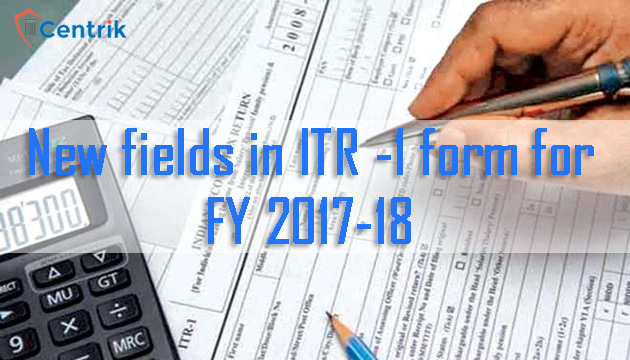
As we all know the income tax department has uploaded the ITR-1 form or Sahaj for the financial year 2017-18 on its portal. This form is for individuals being a resident other than not ordinarily resident having Income from salaries, one house property, other sources.
Further peoples having total Income up to Rs 50 lakh can only file ITR-1 form.
Now in this article we going to discuss the fields showing in ITR-1 form. There are many changes in New ITR-1 form launched for filling return for FY 2017-18. One of the major change introduced in the new ITR form is that the taxpayer is now required to provide break-up of their salary income and income from house property.
Form-16 (TDS Certificate)
Form -16 is the TDS certificate issued by the employer showing all breakup of salary and TDS deducted A person filling ITR-1 form can get all details from form-16.It provides all the information about their salary details which includes basic, allowances, perquisites etc.
Income from salary
In broad sense we are required to furnish following details of Income forming part of salary.
i.e Salary (excluding all allowances, perquisites and profit in lieu of salary), allowances that are not exempt from tax, value of perquisites, and profit in lieu of salary.
a) Salary (excluding all allowances, perquisites, profit in lieu of salary)
This is the basic salary of salaried Individual.
b) Allowances not exempt from tax
All allowances that are part of your salary are fully taxable. Some of them are tax exempt up to a certain amount, whereas some are fully taxable.
Perquisites
Perquisites refer to a benefit that employees enjoy or are entitled to on account of their job or position. Income tax laws define perquisites as any casual emolument or benefit attached to an office or position in addition to salary or wages.
Value of Perquisites are added while calculating taxable salary. However, all perquisites are not taxable at their cost and some of them are even exempt from tax.
Profit in lieu of salary
Section 17 of the income tax Act states that any payment received by an employee in addition to salary or wages will be charged as ‘Profit in lieu of salary’.
It includes retrenchment benefit, interest received from your exempted recognised provident fund in excess of 9.5 per cent per annum or payment received by the employee before joining or after the termination of employment.
Standard Deduction
Standard deduction of Rs 40,000 introduced in the budget 2018 will be available to taxpayers from the next year, i.e., FY 2019-20 onwards.
Income from house property
Taxpayers having Income from one house property are required to provide details of house property. In last year’s form, taxpayers had to only mention the amount of income earned from the house property without providing any extra details of the same.
Now we have to furnish the details such as whether the house property is self-occupied or let out, gross rent received or receivable, taxes paid , interest payments on home loan, annual value of the house and so on.
Income from other sources
Taxpayer can also furnish their Income details under the head “Income from other sources”. It includes interest income, dividend income etc.
Disclaimer – The above summary is based on the personal interpretation of the revised regulations, which may differ person to person. Hence, the readers are expected to take expert opinion before placing reliance on this article.




 join For Updates
join For Updates